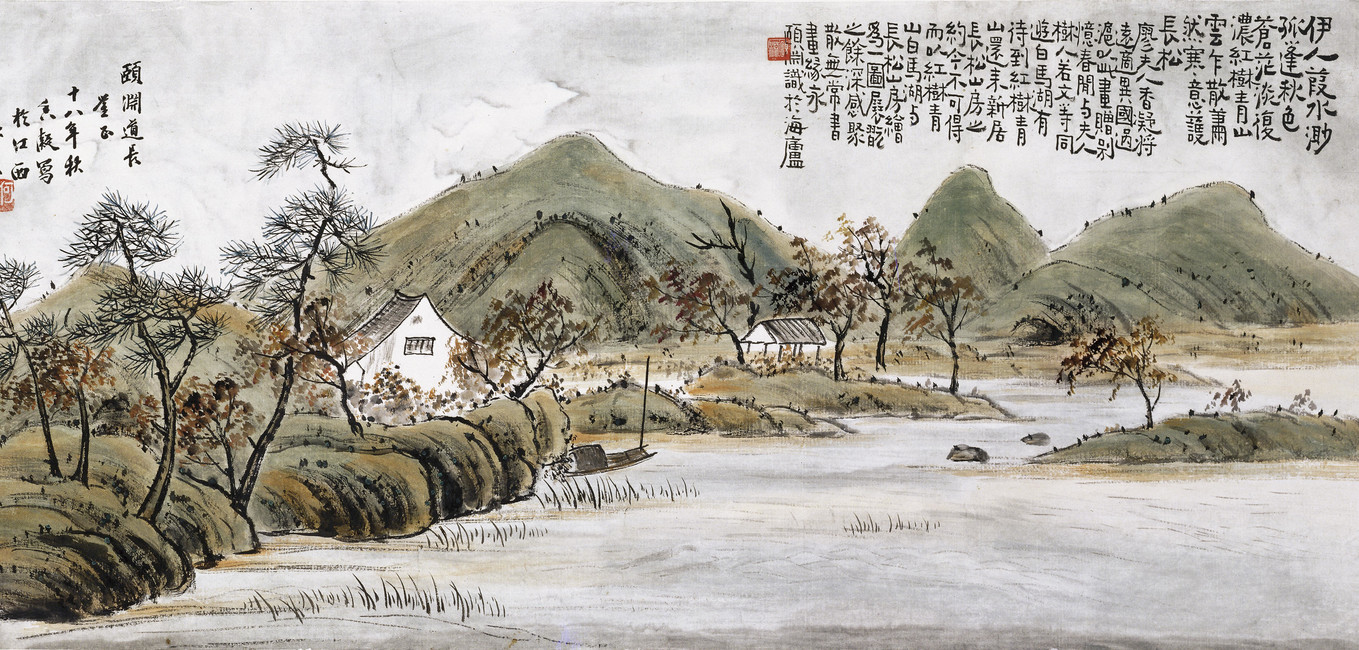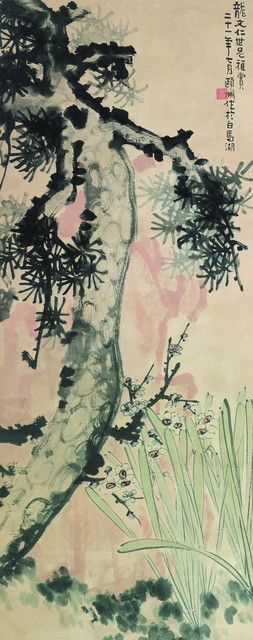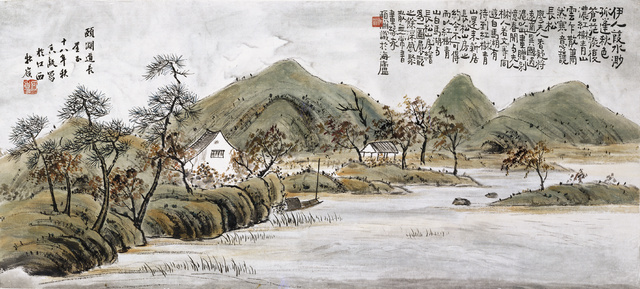He Xiangning (1878-1972), born in Hong Kong, was originally from Mian (“cotton” in Chinese) village, Nanhai County, Guangdong Province. Alternative names were Miancun Jushi (a literati in Mian village) and Shuangqing Louzhu (the owner of Shuangqing building, “Shuangqing” conveys the pureness of both the person and the moon). She was a great woman who was a social activist as well as an artist in modern China.
In 1903, He Xiangning and her husband Liao Zhongkai traveled to Japan to study. In 1905, she joined Tung Meng Hui (the United League of China), followed Sun Yat-sen to join in the struggle of the Revolution of 1911, the crusade against warlords, and later devoted herself to the Chinese Democratic Revolution. After the establishment of the People’s Republic of China, she held a variety of official posts, including Member of the Central People’s Government Committee, Director of the Overseas Chinese Affairs Committee, Chairperson of the Nationalist Party Revolution Committee, Honorary Chairperson of the All-China Women’s Federation, Vice Chairperson of the Chinese People’s Political Consultative Conference, and Vice Chairperson of the Standing Committee of the National People’s Congress.
He Xiangning was an outstanding leader of the People's Republic of China. She devoted her whole life to the liberation of Chinese people, the establishment of the People's Republic of China, national socialist construction and unity, and friendship between Chinese people and people of all countries in the world, which gives her great prestige at home and abroad.
He Xiangning once served as the chairperson of China Artists Association. Her paintings are magnificent and profound. She often used the description of pine, plum, lion, tiger and mountain to express her emotions and ambitions, which was a vivid portrayal of her 70 years' revolutionary career and noble personality. Many artists and leaders of the country added some strokes and inscriptions, which made her paintings more dignified. Her paintings could be called the treasure of the Chinese nation.
Jing Hengyi (1877-1938), courtesy name Ziyuan, alternative names Shichan and Yiyuan, born in Shangyu, Zhejiang Province, was a famous educator and artist in modern Chinese history. He went to study in Japan in 1903 and enrolled in Tokyo Normal University, specializing in education and mathematics. Among his classmates were Xu shoushang, Qian Jiazhi (Qian Xuesen's father), Chen Hengke, etc.
After the Revolution of 1911, Jing Hengyi took up the post of the principal of Zhejiang Two-level Normal School and the vice-chairperson of Zhejiang Education Council. In 1922, as the schoolmaster, Jing Hengyi established Chunhui Middle School at Baima Lake in Shangyu. Many scholars were teaching here, such as Xia Qizun, Zhu Ziqing, Zhu Guangqian, Feng Zikai. In 1926, Jing Hengyi began to learn painting, mainly about flowers such as plum, orchid, pine and bamboo.
Fan Shoukang commented that Jing was "good at calligraphy and seal making, thanks to The Tablet of Cuan Baozi, so he was capable of painting without any guidance". With He Xiangning, Chen Shuren, Liu Yazi, he established a group named The association of Three Friends of Winter (Three friends mean pine, bamboo and plum blossom) which had a lot of friendly intercourse with several artists from Shanghai, for example, Huang Binhong, Zhang Daqian, Zhang Shanzi, Pan Tianshou, Yu Youren and so on. Jing Hengyi died in 1938 from illness in Shanghai. Throughout his life, Jing achieved admirable achievements in modern education, calligraphy and painting, epigraphy, poetry and other fields.
Both being the social activists in Chinese modern history, the friendship between He Xiangning and Jing Hengyi might date back to the time before the establishment of The association of Three Friends of Winter. They shared the same revolutionary ideals, artistic pursuit and even personality spirits.
In 1929, before left for Europe, He Xiangning painted the landscape of “Pinewood Courtyard” at Baima Lake as a friend's aspiration. Jing Hengyi narrated the story with a long postscript, hoping that "let’s rendezvous at Pinewood Courtyard again when maple leaves turn red and mountains turn green".
Since then, because of the love between Liao Chengzhi (He Xiangning’s son) and Jing Puchun (Jing Hengyi’s daughter), He Xiangning and Jing Hengyi became in-laws at the level of "intimate friends". In order to memorize the special friendship between them, our museum curate the exhibition - Rendezvous at the Pinewood Courtyard: He Xiangning and Jing Hengyi Art and Literature Exhibition - to exhibit about 60 pieces of selected artworks by these two magnificent artists. The exhibition can be divided into units as "New Knowledge and Traditional Learning", "Between Lakes and Mountains" and "Calligraphy and Painting Metaphors" to narrate the stories of two artists and two generations in the context of family and country, as well as their artistic achievements.











